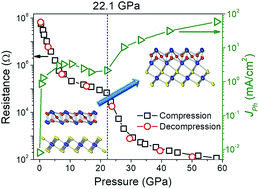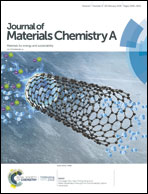Giant enhancements in electronic transport and photoelectric properties of bismuth oxysulfide by pressure-driven 2D–3D structural reconstruction†
Abstract
Layered bismuth oxychalcogenides have been considered exciting material systems with potential applications in superconductivity and thermoelectricity, but their optoelectronic properties still require greater diligence. The pressure-driven 2D–3D structural reconstruction is an efficient strategy to in situ tune the electronic configuration of functional materials, and yet has remained a challenge for both fundamental studies and technological applications. Here, we present the pressure-driven buckling effects of the layered bismuth oxysulfide Bi9O7.5S6 on a 3D network structure. Although no crystallographic symmetry change was observed up to 58.1 GPa, the layer and bonding distances between and within BiO and BiS layer changed dramatically, which drives the enhancements of electric conductivity by 6 orders of magnitude, increasing the photocurrent by 4 orders of magnitude, and significant narrowing down of band gap from 1.34 eV to 0.45 eV. These findings may open a new avenue for discovering and designing high-efficiency photodetectors and energy-harvesting materials.



 Please wait while we load your content...
Please wait while we load your content...